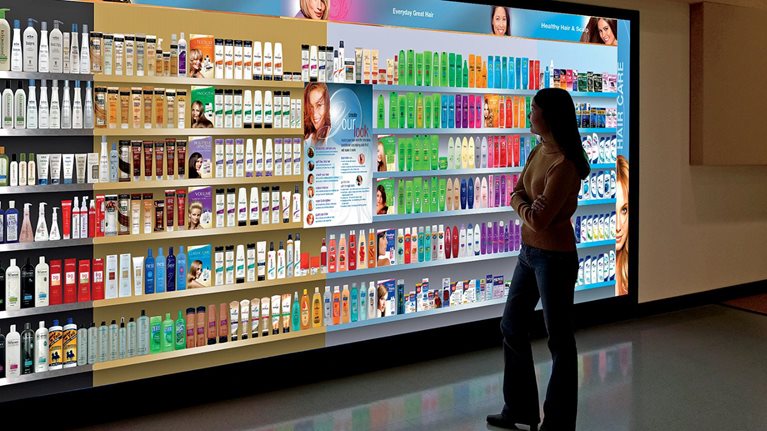International operations beget complexity. As most multinational companies have come to understand—at times, the hard way—going global often produces organizational clutter and reduces agility. Scaling up can also create fundamental confusion about roles and responsibilities, often contributing to the large number of e-mails, meetings, and scorecards. Sometimes, multinationals mandate globally scaled solutions that cater to a theoretical average but have little relevance for local operations. Other times, multinationals tailor solutions too much to each local subsidiary’s specific circumstances. Predictably, many of scaling’s benefits and cost savings evaporate.
A 2011 McKinsey Quarterly article called this problem the “globalization penalty”: leadership’s attention wanders, the cost structures of regional subsidiaries (including global head-office charges) soar, and local operations buckle under internal bureaucracy. What’s more, McKinsey research shows that high-performing global companies consistently score lower on several critical dimensions of organizational health than more locally focused companies do.1 Customer service suffers too as multinationals struggle to compete with leaner local or “new economy” competitors.
Over my long career, I’ve experienced various flavors of the globalization penalty at major multinationals. From 2009 to 2013, at Unilever, I helped lead an initiative to remove organizational complexity customers didn’t value while retaining essential elements of organizational scale. In this article, I elaborate on the underlying challenges that vex global organizations and suggest some new solutions that have been emerging through advances in information technology. Then I present a case study of Unilever’s experiences in trying to adapt its organization and to create a new architecture for global services. That journey is far from complete, but it has already delivered some of the speed and organizational simplicity that motivated us to undertake it. Unilever’s experience also suggests some useful lessons—for example, about the power and limits of technology.
The perils of functional silos
Just about every multinational company was once a local enterprise—and a very successful one at that. This is not ancient history. As recently as the 1980s, many multinationals were managed largely on a local-for-local basis: in nearly every country where they did business, there was a site with a factory, a warehouse, sales, marketing, some R&D, and support staff. Problems could often be solved within a radius of 200 meters. The business was well understood because oversight was local. Most important, a company was close to its customers and could act as quickly as circumstances required.
More recently, however, multinationals have moved away from the local-for-local model. Through a combination of organic growth and acquisitions, the businesses of multinational companies began to replicate in new markets. Consolidation was in order—often for compelling reasons, such as cost synergies and lower duplication of effort. As a result, the majority of processes have been scaled up. R&D, for example, came to operate in a network of R&D centers; supply chains were managed regionally or globally; and procurement often stretched around the world. But consolidation also led to new sorts of complications, typically manifested by matrix organizations, which combine profit-responsible business groups or divisions, often by region or country, with vertical, functional pillars.
While there is nothing wrong with matrix organizations per se, they do place particularly heavy demands on the coordination of core functions such as R&D, marketing, and sales, as well as support functions such as finance, IT, and HR. Each function generally has four responsibilities: setting and executing a company’s strategy for that function, managing its area of expertise, partnering with the rest of the organization, and running its own functional operations to serve business units.
In matrix organizations, this last responsibility too often becomes the neglected stepchild. Ask HR directors about their priorities, and they will probably respond by mentioning organizational development, managing talent, or diversity. But push them on operations, particularly at the local level, and they will probably refer any day-to-day questions to a regional subordinate. Many of their colleagues in other functions will do the same.
Operations are not only undermanaged but also mismanaged because functional silos almost assure suboptimal outcomes. Most business processes cross functional boundaries. One example is order to cash: sales receives an order, logistics undertakes fulfillment, and finance handles invoicing and cash. Managing a process through separate silos almost guarantees complexity. It creates internal inconsistencies and punishes the customer with foreseeable mistakes.
There are exceptions, of course. One is the supply chain, which in many multinational companies is organized on a truly end-to-end basis, from purchasing to production to delivery (“make to deliver”). Most operations, however, are not managed on an end-to-end basis. The telling results include late payments to creditors, high overdues resulting from invoicing errors, cluttered information landscapes with a myriad of intranets, imprecise headcount data, and unsorted master data, to name but a few of the complications. When day-to-day operations are managed in functional silos, the rationale for those operations—serving the customer—is obscured.
Technology-enabled solutions
Today, technology is leading multinational companies to an inflection point. Global enterprises can now imagine a radically different, and far more effective, way of managing operations: by reorganizing functional ones to focus on key processes. This approach allows the enterprise to maintain advantages of scale while enabling its subsidiaries to become more nimble in each of their local markets.2
Technology is delivering several major benefits. One is a growing level of automation, which serves to localize and simplify transactions and service. Improved network capacity and reduced response times mean that local operations, even in continents far removed from the head office, can run on global enterprise-resource-planning (ERP) software from remote data centers.
Furthermore, multinationals can now centralize and analyze data far more efficiently. As the size and speed of databases have grown exponentially, the goal of building a single global data warehouse is coming within reach. Most significantly, global companies are now more able to act “as one” through powerful, cost-effective devices and applications. High-end videoconferencing systems enable robust global communication over a variety of media in real time, connecting far-flung employees on the fly. Flexible and adaptive solutions, often run from the cloud, help employees to work together remotely and solve problems on a global basis. For instance, at Nestlé, Chatter—a platform developed by Salesforce.com—is now the go-to collaboration tool for over 200,000 people, who use it to crowdsource innovation.
Ironically, today’s advanced technology can help multinationals recapture the simplicity of their founding days. As user-friendly but powerful technological platforms sweep away complex systems, companies can release functional operations from their constraining silos. This development promotes more integrated global operations and allows companies to become effective in every local market in which they compete.
Carving out functional operations at Unilever
Late in 2009, Unilever embarked on a journey to implement global business services (GBS). I helped lead this initiative, which came to be named Enterprise & Technology Solutions, or ETS. Paul Polman, Unilever’s CEO, charged us “to take out the complexity that consumers do not want to pay for.” Activities that ultimately fell within the scope of ETS included finance, HR, IT, information management, real estate and facilities management, and indirect procurement. In all, the initiative addressed about 40 separate service lines, including purchase to pay, record to report, recruitment, master data, and facilities services. We aimed to make each of these service-line operations simpler, cheaper, and better.
A global, virtual delivery organization
To achieve these goals, our team carved service lines out of their respective functions to manage them end-to-end. We created a global, virtual delivery organization and based team members around the world (most meetings are conducted by video conference). Operating centers running multiple service lines were set up primarily in locations in emerging markets, such as Bangalore, India; Istanbul, Turkey; Katowice, Poland; Omsk, Russia; and Shanghai, China. These centers, charged with coordinating the global delivery of services, work in close conjunction with ETS personnel now present in every market to ensure that things run smoothly.
Operational performance is measured on a single global dashboard, which is visible to ETS operators, internal clients, and top management. Under the mantra “what gets measured gets done,” the dashboard’s quantitative and qualitative service metrics have consistently improved, year over year. Since the initiative was launched, it has contributed significantly to Unilever’s reduction in overhead of about 200 basis points.
A new architecture for global services
When we designed the new architecture for global business services, we started with a holistic process map (for a highly simplified version, see the exhibit).
A process view on integrated business operations

This process-oriented view guided us in carving out existing functional operations and regrouping them under more rational, end-to-end ETS service lines. Business-excellence process teams working hand-in-hand with IT-development personnel played a key role in this transformation. Together, they created and implemented service-line strategies to combine global scale with local relevance—often achieving both through radical simplification. Examples include the following:
Plan to report. Financial reporting at Unilever has been streamlined and centralized. As a result, the company has gone from worst- to best-in-class in time to market. In 2015, it was the first FTSE 100 company to report its annual results (that is, results covering the 2014 calendar year), saving top management weeks in extra time.
Communications to change. Unilever had maintained more than 400 intranets, one for almost every country, product group, brand, and function. Communications were not aligned, and employees often felt unsure where to search for the right information. Maintaining those sites also proved expensive. ETS instituted a single global intranet accessible in more than 20 languages. A common setup—a one-stop shop in English and local languages alike—now unites the company. This arrangement has also been replicated for external partners, so that the end-to-end process now includes the operations of Unilever’s suppliers and could eventually include customers, as well.
Data to insight. We required internal management reports to be posted on the company’s single intranet (“two clicks away”) rather than submitted by e-mail. For the first time ever, Unilever now has a single repository for reports. We realized that the company had well over 12,000 of them, though by our calculus a typical subsidiary should need no more than 120. We therefore initiated a program to simplify information—an effort that has already reduced the number of reports by 40 percent, with further reductions to come. Standardized reports are increasingly produced from the center in Bangalore, which over time will transform from a reporting center into an analytics powerhouse. In fact, the program’s real value lies not so much in greater efficiency as in clearer management alignment and faster, better decision making.
Market research to consumer insight. Historically, Unilever had outsourced its marketing-mix modeling to specialized agencies. The complexity and expense, however, often limited the exercise to larger categories and countries. The ETS team recommended hiring a number of specialists, including several with advanced degrees, at the Bangalore center, which now provides low-cost, standardized, and high-quality marketing-mix modeling across Unilever. Consumer insights have vastly improved.
Purchase to pay and order to cash. Prior to the ETS initiative, Unilever had managed its requisitions and payment processes differently across its local subsidiaries. Performance suffered, and costs were often too high. After identifying inconsistencies and best practices, our team turned a weakness into a strength. Unilever is also taking the same approach in order to cash. Where the company ran about 200 separate systems more than a decade ago, it now has just four ERP instances, which are managed as one. This standardization has increased the efficiency of delivery and setup, which are global in scale but served locally to keep customers happy.
Hire to retire. Before undertaking the ETS initiative, Unilever had different HR processes in different countries, varied learning curricula, and inconsistent employee data. ETS provided employees with easy-to-use self-serve interfaces on laptops and tablets. We also standardized HR processes where possible, so that reliable personnel data could be accessed throughout the company. As a result, Unilever now draws upon high-quality analytics and manages its talent to far better effect.
Strategy to portfolio. Like many multinational companies, Unilever had managed its acquisitions on a case-by-case basis, and the integration of newly acquired businesses could be lengthy and uneven. ETS adopted a now-standard company protocol, so that acquisitions are integrated quickly and well, even for complex multibillion-dollar businesses, such as Sara Lee Personal Care and European Laundry and Alberto Culver.
Would you like to learn more about our People & Organizational Performance Practice?
The way forward
The ETS initiative is an experiment in action, but its twin central themes—enforcing radical simplification and combining global scale with local relevance—are already proving themselves. Slowly but perceptibly, Unilever is reclaiming its founding simplicity. Still, simplification isn’t easy. Every process and service line has its own characteristics; what’s good for one can be catastrophic for another. Integrating business operations is also about more than just following the process manual; the softer aspects of large-scale transformation are at least as significant. And there are other important lessons about global business services, as well.
Technology isn’t a cure-all. Although absolutely critical to a successful GBS program, technology is only a means to global effectiveness, not an end in itself. Launching GBS is a business decision, and business decision makers, not IT, should lead the execution. Nor should functions surrender their influence. Their core responsibilities remain the same—but in a new construct, which shifts day-to-day operational management to a truly integrated, end-to-end process under uniform global leadership. Functional bias must end, and technical expertise must support business objectives.
Banish “back office” from the corporate vocabulary. The support operations of a multinational company should never be considered back-office activities. In many businesses, a significant portion of all administrative employees typically support front-office functions, such as sales and marketing. Overstaffing at the administrative level is often a symptom of deeper complexities. It also holds the potential for radical simplification and significantly lower costs. But cost cutting, however welcome, is merely a byproduct; GBS is not primarily about reducing expenses. The point, instead, is to simplify a company and better serve its customers. Implementing GBS should therefore be a strategic, front-and-center effort, not a tactical, behind-the-scenes one.
A top-management imperative. Unilever is one global company that’s rising to meet the challenge; many others have also succeeded in making GBS a priority. In companies such as Alcoa, Novartis, and UPS, GBS has become a C-suite responsibility. The experience of these companies suggests that any drive toward integration must be supported in full by a company’s senior leaders.
GBS requires a strong operational framework and an appropriate governance structure. The service organization must be populated with top talent, and a stint in operations should become a “must” for functional leaders. Finally, the need for effective communications and change-management policies cannot be underestimated. Shifting the behavior of employees, driving the adoption of changes, and dealing with internal politics are typical challenges on the road toward integrated business operations. Meeting these challenges demands careful planning, as well as clear accountability for turning plans into action.


